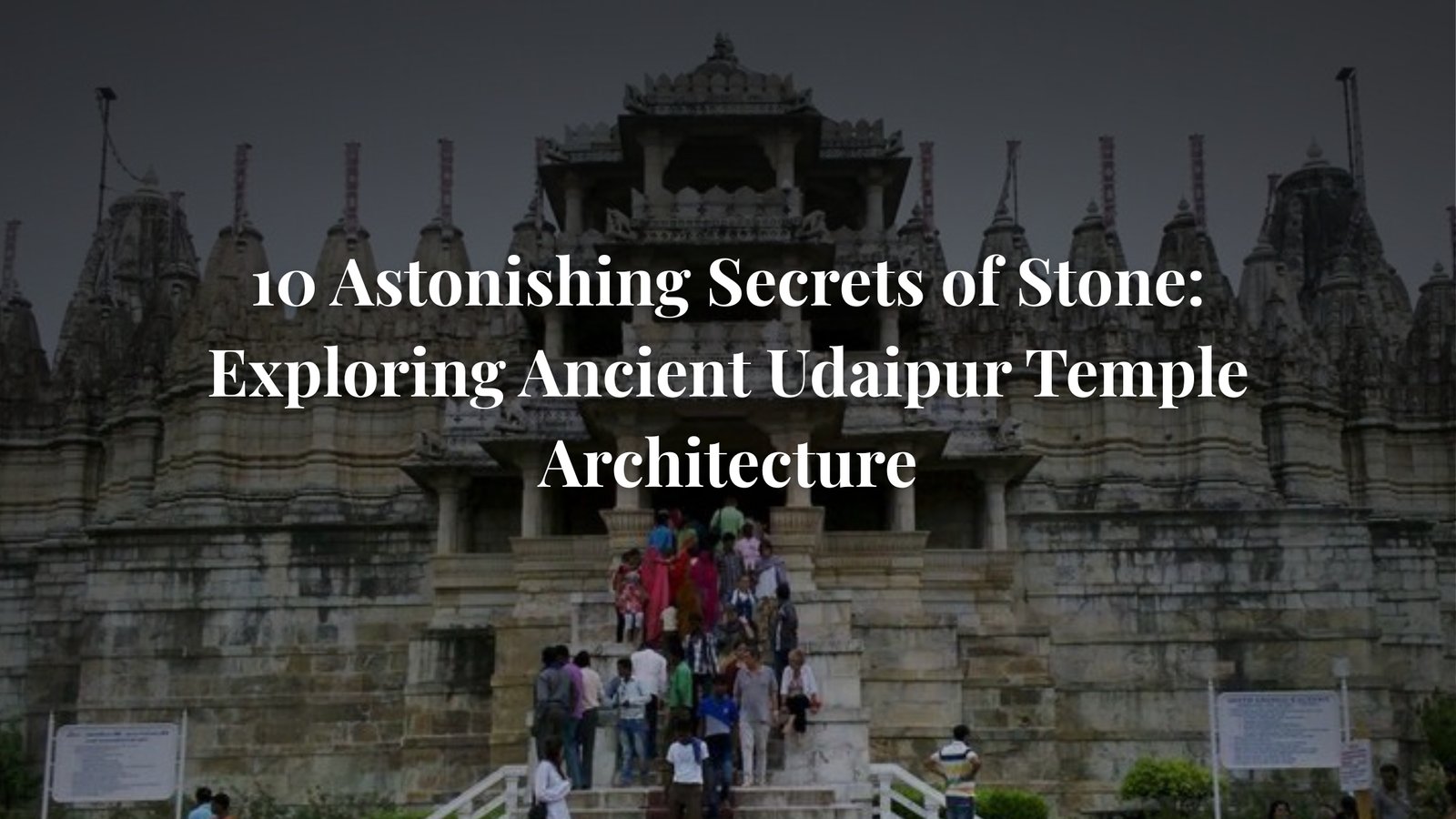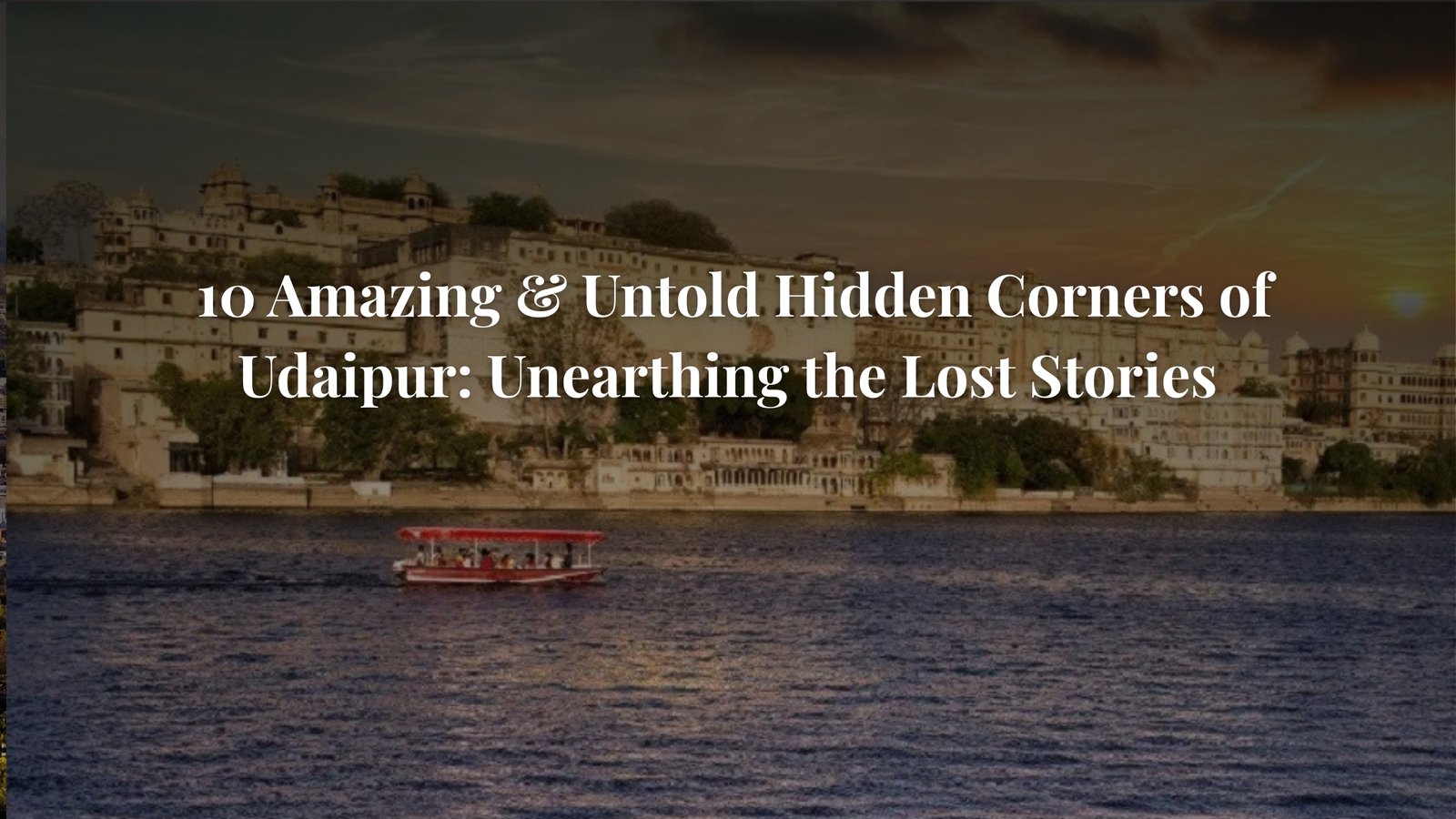The allure of Udaipur, the City of Lakes, is legendary. Tourists flock to its waterfronts, captivated by the romance of the City Palace and the luxury of the Lake Palace. These grand structures form the public face of Mewar’s heritage. However, the true spiritual and artistic core of this ancient kingdom lies just off the beaten path, where time seems to slow down, and stone tells tales a thousand years old. This is the realm of Udaipur Temple Architecture, a subject often overshadowed by the city’s palatial fame, yet infinitely more profound for the discerning traveler.
For those eager to peel back the layers of history, a discovery awaits: a collection of magnificent, yet largely unheralded, shrines that represent the finest craftmanship of the Mewar and Gurjara-Pratihara dynasties. We are talking about the sheer ingenuity, the dedication to detail, and the Astonishing structural resilience found across 10 unique sites. These temples are not just devotional spaces; they are living blueprints of North Indian Nagara-style architecture, displaying intricate friezes, celestial beings, and powerful deities carved with a mastery that rivals the famed temples of Khajuraho.
To fully grasp the magnitude of Mewar’s legacy, you must understand its deep spiritual roots, which were protected and celebrated through its Udaipur Temple Architecture. Unlike the highly frequented Jagdish Temple, these sanctuaries offer silence, solitude, and an up-close look at art that has survived centuries of conflict and change. Think of the twin complexes of Nagda, whose detailed pillars depict an Astonishing array of mythological narratives. Or the grand complex of Eklingji, the principal deity of the Mewar rulers, which stands as a sprawling testament to medieval Hindu faith.
This curated exploration of 10 Astonishing stone secrets will shift your perspective on the City of Lakes. We delve into the unique design principles, the materials used, and the spiritual significance embedded in the very foundation of these remarkable buildings. Many visitors regrettably miss these architectural gems, focusing instead on the more contemporary structures. But for those who venture out, the reward is immediate and profound. Prepare to be amazed by the sophistication and enduring beauty of ancient Udaipur Temple Architecture.
1. The Nagara Masterpiece: Sas Bahu Temples (Nagda)
- Focus on Nagda’s Structural Brilliance: This 10th-century complex is a phenomenal example of Nagara-style architecture.
- Architectural Feature: The Astonishing ornamentation of the two main shrines, dedicated to Lord Vishnu. Detail the intricate carvings on the pillars and ceilings of the mandapas (halls), covering everything from celestial dancers to mythological epics, showcasing the depth of Udaipur Temple Architecture.
- Keyword Use: The Sas Bahu complex represents the gold standard of Udaipur Temple Architecture.
2. The Sculptural Showcase: Ambika Mata Temple (Jagat)
- Focus on Detailing: Often called the “Khajuraho of Rajasthan” due to its rich external sculptures.
- Architectural Feature: The entire exterior is covered in Astonishing carvings depicting Goddess Durga, heavenly nymphs (Apsaras), and scenes of daily life. The temple’s shikhar (spire) and foundation are a perfect study of mature Nagara Udaipur Temple Architecture.
- Keyword Use: This 10th-century gem exemplifies the complex artistry of Udaipur Temple Architecture.
3. The Dynastic Shrine: Eklingji Temple Complex
- Focus on Scale and Longevity: Dedicated to Lord Shiva, this complex dates back to 734 AD and is the ruling deity of Mewar.
- Architectural Feature: A sprawling site featuring 108 temples within its walls. Highlight the Astonishing four-faced black marble Shiva Lingam and the main temple’s unique pyramidal roof, a recurring motif in regional Udaipur Temple Architecture.
- Keyword Use: As the religious center of the region, Eklingji is the cornerstone of Udaipur Temple Architecture.
4. The Organic Design: Gupteshwar Mahadev Temple
- Focus on Natural Adaptation: A cave temple whose form is dictated by the Aravalli hills themselves.
- Architectural Feature: The unique challenge of building a shrine within a natural formation. The Astonishing spiritual power derives from the naturally formed Swayambhu (self-manifested) Shiva Linga, merging indigenous worship with formal stone Udaipur Temple Architecture.
- Keyword Use: This site presents an unusual form of ancient Udaipur Temple Architecture.
5. The Auspicious Corner: Bohra Ganesh Temple
- Focus on Localized Style: A highly revered Ganesha temple, popular among local residents.
- Architectural Feature: While structurally simple compared to the grand Nagara temples, its charm lies in its old, traditional Rajasthani design and the massive, upright Ganesha idol. This folk-religious site is an Astonishing example of enduring, small-scale Udaipur Temple Architecture.
- Keyword Use: An essential piece of local Udaipur Temple Architecture.
6. The Aravalli Perch: Neemach Mata Temple
- Focus on Site Selection: Strategically located atop a hill near Fateh Sagar Lake.
- Architectural Feature: The journey is key; the 900-meter climb (or ropeway) leads to a red sandstone structure. The temple’s position provides an Astonishing aerial perspective, showing how Udaipur Temple Architecture often utilizes natural elevations for prominence.
- Keyword Use: A testament to location as a key element of Udaipur Temple Architecture.
7. The Serene Lakeside Shrine: Mahakaleshwar Temple
- Focus on Antiquity and Shiva Worship: A 900-year-old temple near Fateh Sagar Lake.
- Architectural Feature: A classic, enduring example of medieval North Indian design, with an Astonishingly peaceful setting. The temple’s simple shikhar and black stone Shivling reflect a focused, powerful form of Udaipur Temple Architecture.
- Keyword Use: A profoundly peaceful monument of Udaipur Temple Architecture.
8. The Royal Seclusion: Shiv Niwas Palace Temple
- Focus on Private Devotion: Tucked away within the royal grounds, offering a rare glimpse into a private shrine.
- Architectural Feature: A subtle, small, yet exquisitely maintained structure. Its architecture speaks of royal refinement and devotion, a quieter, more exclusive form of Udaipur Temple Architecture than the grand public temples.
- Keyword Use: An exclusive example of royal Udaipur Temple Architecture.
9. The Rural Green Retreat: Ubeshwar Mahadev Temple
- Focus on Nature and Pilgrimage: Located on a green hill in the Ubeshwar area, often a destination for local hikers.
- Architectural Feature: Built to harmonize with its natural surroundings. The Astonishing appeal is the use of local stone and simple, strong construction, emphasizing durability and integration with the landscape—a practical aspect of Udaipur Temple Architecture.
- Keyword Use: Showcases the functional side of Udaipur Temple Architecture in rural settings.
10. The 15th-Century Vishnu Shrine: Jagat Shiromani Temple
- Focus on Specific Dedication: An elegant temple dedicated to Lord Krishna (a form of Vishnu).
- Architectural Feature: Built in the 17th century, it is renowned for its elaborate stone carvings and beautiful hall, demonstrating a later, ornate evolution of Udaipur Temple Architecture. The detail in the mandap is particularly Astonishing.
- Keyword Use: A powerful and ornate example of post-medieval Udaipur Temple Architecture.
Conclusion (350–400 words)
The journey through these 10 Astonishing monuments reveals the true architectural soul of the Mewar region. While the palaces attract global attention, the enduring spirit and artistic mastery reside in the ancient stone carvings and soaring spires that define Udaipur Temple Architecture. This is not merely a collection of old buildings; it is a profound historical document that speaks of a faith so deep it motivated craftsmen to spend generations carving entire mythological universes onto sandstone and marble.
From the majestic Nagara-style architecture of the Sas Bahu Temples—a triumph of 10th-century engineering—to the simple, local power of the Bohra Ganesh shrine, each site is a crucial piece of the spiritual and cultural mosaic. We see a clear evolution: from the sprawling, dynastic power of Eklingji to the intimate, natural integration found at Gupteshwar Mahadev. This diversity is what makes the study of Udaipur Temple Architecture so Astonishing and rewarding.
The use of specific design elements, the integration of temples with natural high points like the Neemach Mata hill, and the quality of the masonry all demonstrate a knowledge of engineering and aesthetics that continues to baffle modern experts. It is regrettably common for travelers to miss these gems, failing to spend the necessary time exploring beyond the immediate city center.
We hope this deep dive encourages you to seek out the authentic, unvarnished history of Mewar. By tracing the legacy etched in these structures, you connect directly with the Astonishing artistry and spiritual fervor of the past. Let the sheer complexity and durability of this ancient stonework inspire your next journey. If you wish to witness the pinnacle of regional historical design, look no further than the enduring tradition of Udaipur Temple Architecture.




